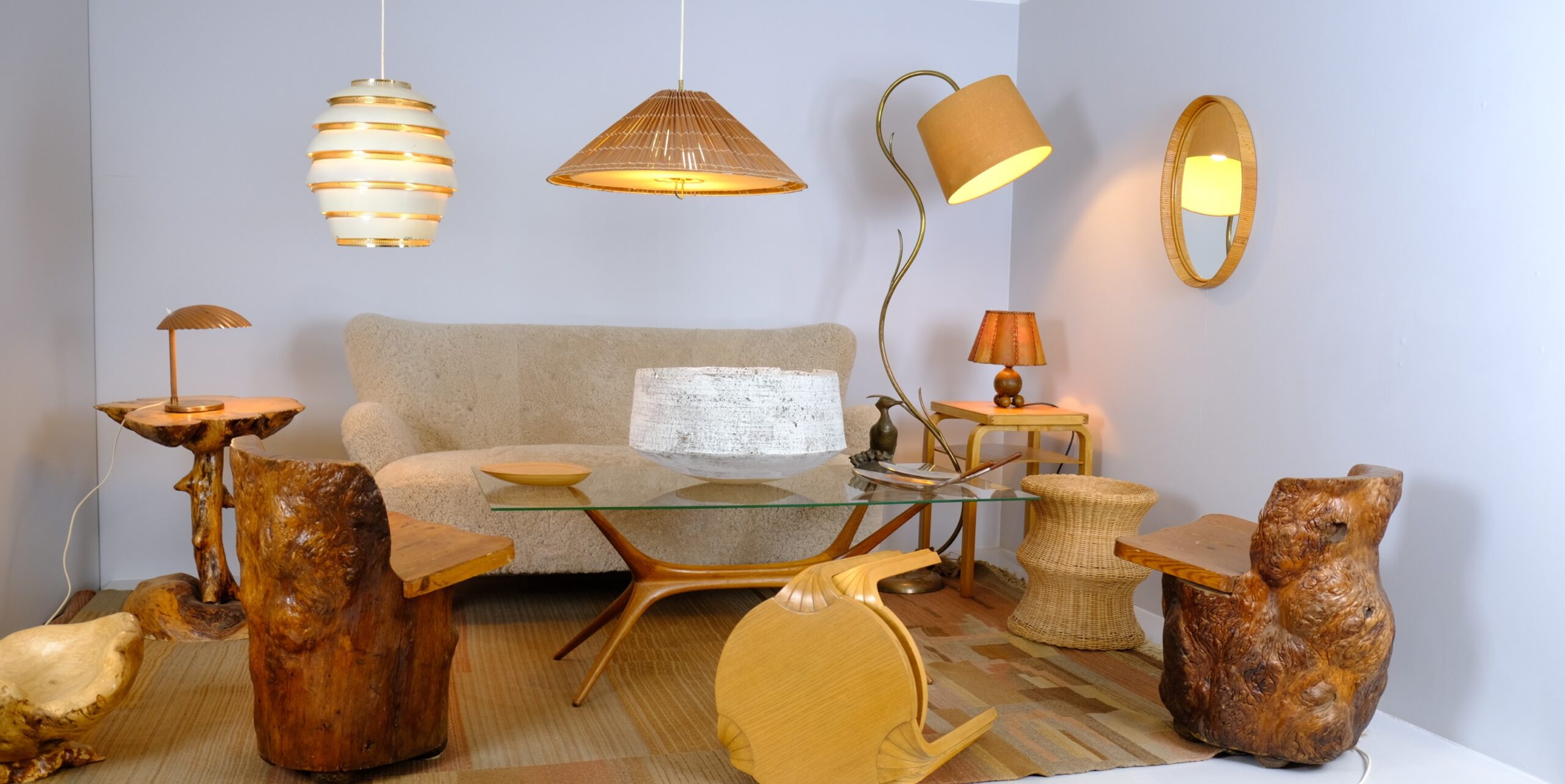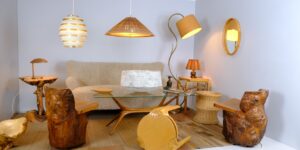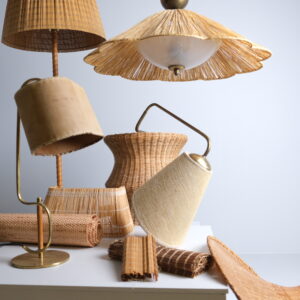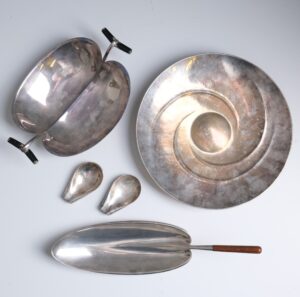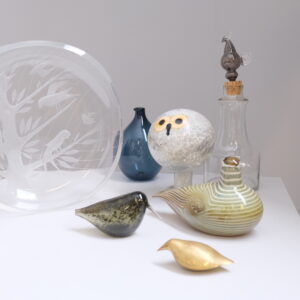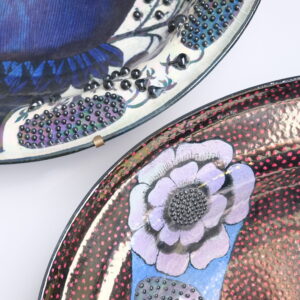Finnish Organic Design: From Nature to Modern Icons
In Finland, design doesn’t just imitate nature—it grows out of it. Rooted in forests, lakes, and long-held traditions, organic design became a defining language of Finnish modernism. This nature-inspired movement blended craft, function, and beauty, transforming wood, glass, and metal into timeless expressions of the Nordic landscape.
Finland’s Design Identity and Nature
In the late 1800s and early 1900s, Finland was still shaping its cultural identity. Designers turned to what surrounded them most closely—forests, lakes, and the vast, varied landscapes of their homeland. From the weaving and metalwork traditions of the west to the birch-bark crafts of the east and the pelts, leathers, and antlers of the north, a deep
connection between people, materials, and place began to emerge.
This harmony between tradition and environment laid the foundation for what became known as organic design—a style defined by natural lines, tactile materials, and flowing textures. Over time, it evolved and refined itself, moving from folk and national romanticism to the clean and purposeful forms of modernism. This balance of heritage and innovation ultimately propelled Finnish design onto the world stage.
What Is Organic Design?
The word organic speaks of life, growth, and natural rhythm. In design, it appears as lines echoing branches, textures recalling moss or frost, and forms that seem to have grown rather than been made.
In Finland, however, organic design was not only about visual resemblance to nature—it was about balance. Ornament and function coexisted in harmony, each enhancing rather than competing with the other.
The Language of Finnish Organic Form
Ornamental motifs – Translating natural elements directly into decorative features, as seen in Paavo Tynell lighting or Arabia’s hand-painted ceramics.

Abstract expressions – Turning nature into function through clear, almost direct interpretations—like Tapio Wirkkala’s or Greta Eker’s antler-inspired table and candleholders.
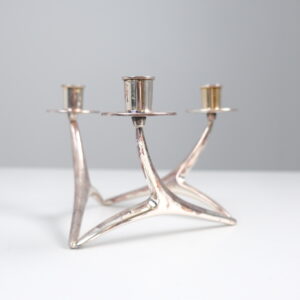
The in-between – The most subtle translations of nature, where organic inspiration merges seamlessly into use. Tapio Wirkkala’s tableware and Alvar Aalto’s beehive lamps embody this balance—neither literal nor purely decorative, but naturally integrated into their function.
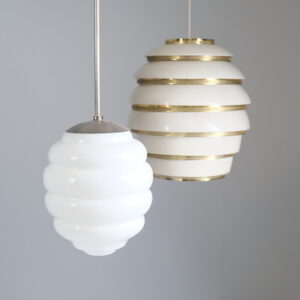
Together, these approaches—decorative, functional, or a blend—formed the visual and emotional language of Finnish organic design. This sensibility was expressed through several recurring elements.
Elements of Organic Design in Finland
Natural Materials
Nature’s resources were both a necessity and an inspiration. Wood, string, and textiles defined the shortage years of the 1940s, but their use in Finnish craft dates back much further. From bentwood chairs and reed lampshades to woven “ryijy” rugs, these materials carried warmth, texture, and honesty.
Designers also brought folk and traditional objects into the modern era—seen in the Nurmesniemi stool or lamps that retained the raw shapes of natural wood. Even rattan stools by Eero Aarnio demonstrate how Finnish design could embrace global materials while keeping a natural rhythm.
Natural Forms
Designers frequently allowed organic shapes to guide their work. Paavo Tynell translated seashells into lamps, Tapio Wirkkala turned whirlpools into silver dishes, and moss into sculptural glass. These designs bridged ornament and utility while staying deeply rooted in
natural inspiration.
Fauna: Animals, Birds, and Fish
The Finnish imagination often gave life to animals—both playful and symbolic. Oiva Toikka’s glass birds and Taisto Kaasinen’s animated ceramic creatures remain icons of creativity, while Arabia and Kupittaan Savi produced countless animal and fish figurines, often with humor and tenderness. Birger Kaipiainen extended the theme into fantasy, transforming butterflies and birds into decorative worlds beyond reality.
Flora: Leaves, branches, berries and fruits
Some designers drew directly from flora. Itsu lamps—clearly inspired by the floral brass lamps of Paavo Tynell—embody how his organic influence extended beyond his own production at Taito and Idman. Toini Muona and Francesca Lindh pressed real leaves into ceramics, while Rut Bryk and others hand-painted fruits and flowers. In contrast, Birger Kaipiainen took flora to a dreamlike realm, transforming blossoms into surreal, enduring symbols.
Winter Elements
Winter—the defining season of the north—left an indelible mark on Finnish design. Wirkkala and Timo Sarpaneva captured frozen lakes and melting ice in glass, while Tynell’s snowflake chandeliers brought the wonder of falling snow indoors. Frosted surfaces and crystalline
textures mirrored the clarity and silence of Finnish winter.
Light and Colour
Organic design is not only tactile—it is atmospheric. From the earthy tones of woven “ryijys” and textiles to the shimmering glow of Helena Tynell’s glass vases inspired by northern lights, colour became an extension of Finland’s natural palette. Bright, playful glassware by Kaj Franck and others further proved that Finnish design was never static but constantly evolving.
Nature and design in continuous dialogue
Finnish organic design was never a passing trend but a living language—rooted in forests, lakes, and myths, shaped by seasons, and refined through material honesty. Whether decorative, functional, or both, it gave Finland a way to express itself to the world.
Today, whether in a Toikka bird, a Marimekko textile, or Paavo Tynell lightings, that same living spirit endures: an ongoing dialogue between nature and design that remains as relevant and alive as ever.
Which Finnish designer best captures nature for you—Tynell, Wirkkala, or another master of Finnish design?

Author: Shadi Haddadin


